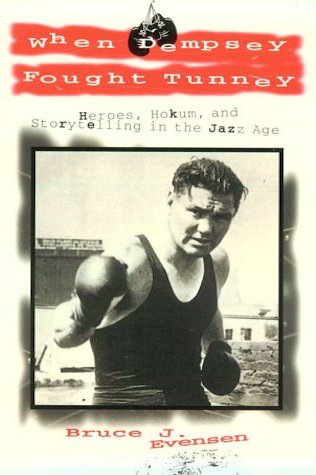By
Bruce Evensen
The University of Tennessee Press
Hardcover, Paperback, 240 pp.

The 1926 heavyweight match pitting champion Jack Dempsey against challenger Gene Tunney was billed as “the greatest battle since the Silurian Age,” and millions of Americans were determined not to miss it. A record-breaking crowd of 130,000 jammed the Philadelphia stadium where the fight was held, while some 39 million radio listeners nationwide gathered at city centers, storefronts, drugstores, athletic clubs, and theaters to hear live coverage of the event. No previous civic spectacle in the United States had drawn so many witnesses.
The making of that event—not just the fight itself but the whole public frenzy that attended it—is the subject of Bruce J. Evensen’s fascinating new book.
When Dempsey Fought Tunney examines the mass media’s cultivation of celebrity during the Jazz Age. Evensen shows how Jack Dempsey, a Colorado hobo turned heavyweight boxer, came to represent in popular iconography the last vestige of the raw pioneering spirit that had tamed the American wilderness. Against the image of Dempsey as noble savage, Evensen explains, the press and fight promoters cannily contrasted that of Gene Tunney, the urbane easterner who seemed to be everything Dempsey was not—a “scientific” fighter, all defense and strategy. Dempsey and Tunney thus became, in their different ways, prime exemplars of the new celebrity culture that emerged during the early twentieth century.
Filled with entertaining details about great moments in boxing history, the book also traces the journalistic developments—such as the rise of the star sportswriter—that played a critical role in creating and sustaining public excitement over sporting events. The result is a colorful, insightful account of America’s appetite for heroes and spectacle as well as of the network of promotion and publicity that nurtures that appetite.